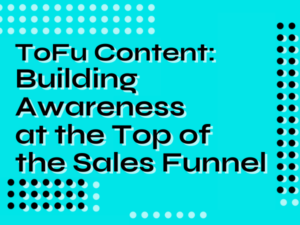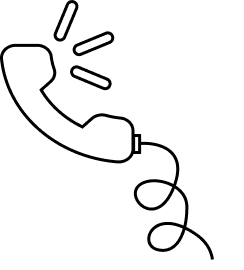Driving conversions is the ultimate goal of every marketing strategy.
Compelling Bottom of Funnel (BoFu) content can help you reach that goal much faster, giving your marketing efforts a notable boost.
Out of the three ToFu, MoFu, and BoFu, the last one has the most direct impact on your business’s sales and revenue. It plays a significant role in your prospects’ decision-making.
Yet, creating BoFu content that converts is a process that requires combining skills from different areas of expertise.
How to approach it, what are the most important aspects, and why do you even need it? Let’s find out!
What is the Bottom of Funnel Content?
The Bottom of the Funnel refers to the final phase in the buyer’s journey, where they are on the verge of a purchase decision.
At that point, your focus should be on reinforcing the benefits of your product or service.
Sadly, you can’t just create content telling your potential customers to buy your products and point to some landing page. Or, you can, but it may turn them away instead of driving your conversion rate.
Therefore, your BoFu content needs to address any remaining objections your prospects might have.
Think case studies, webinars, and detailed pricing pages: they all can serve as powerful tools to establish credibility and showcase the value of your offer.
Przemyslaw PuternickiThe most tricky part about selling something is breaking down the psychological barriers that prevent potential clients from finalizing the purchase.
You have to make your customers feel happy about paying you for the stuff you're offering. Leveraging cognitive biases and the natural patterns of human behavior is one of the most effective ways to do it.
Content Specialist
How Does Bottom of the Funnel Content Help Convert Sales?
The reason why BoFu content marketing works is pretty simple: it fulfils your prospects’ intent at the most crucial moment in the purchasing process.
Relatability is key here.
When potential customers see real-world examples of how your product or service has successfully solved similar issues, they are more convinced of its relevance.
BoFu content isn’t all about successful case studies and glowing customer reviews. Sometimes, a prospect’s hesitation can stem from concerns over technical specifications, pricing, or compatibility issues.
This is when a detailed FAQ page, a comprehensive guide, or a product comparison chart can sway the decision in your favor.
Bottom-of-Funnel Content vs. Top and Middle of Funnel Content
A major distinction between BoFu and other funnel content stages lies in the precision of its audience targeting.
BoFu targets an audience that is already ready to make the decision, resulting in narrower but potentially more effective content. It does so by delivering personalized content that tells the undecided what they want to hear.
This makes BoFu content much easier to measure. ToFu and MoFu require at least some guesswork in forecasting their impact on the business.
BoFu is more straightforward: it affects the bottom line directly, and you can measure its conversion rate, view numbers, and, ultimately, its ROI in an almost linear way.
Common Types of Bottom-of-Funnel Content
While case studies and webinars are great examples of BoFu content, there are many other formats that can fulfil this purpose.
| Content type | Funnel segment | Description |
| Case studies | MoFu and BoFu | Case studies are possibly the best way to showcase your company’s knowledge and expertise. Be it a success story of your customer or a detailed analysis of how you helped overcome a particular challenge, they demonstrate real-world proof of your products or services in action. |
| Webinars | ToFu, MoFu, and BoFu | Webinars can traverse all the stages of the marketing funnel. At BoFu, they can function as a product demo or a Q&A session to resolve any final doubts consumers might have. |
| Product Spec Sheets | BoFu | These comprehensive guides provide detailed technical and operational information about your product. By addressing specific pain points, they can clear the path for a purchase decision. |
| Product Comparison Charts | MoFu and BoFu | With comparison charts, you can present the advantages your offer has over your competition. Make sure to keep it objective and factual to build trust among your audience. Otherwise, you will scare your customers away! |
| Demo Videos | ToFu and BoFu | Prospects want to see your product or service in action before they commit to purchasing. Providing a step-by-step walkthrough in the form of a demo video can prove instrumental in swaying their decision. |
| Testimonials and Reviews | BoFu | Testimonials and reviews reassure potential buyers that others had a positive experience with your product or service. They help to build trust and can be really impactful if they address common pain points or possible reservations. |
This list is by no means exhaustive, but it clearly underlines one vital point: BoFu content does not have to be explicitly bottom-of-the-funnel content. In other words, the content you use at the bottom of the funnel doesn’t have to be made specifically and exclusively for this funnel stage.
Rather, it could be a type of content typically associated with the top or the middle of the funnel, like explainer videos, fine-tuned to satisfy the needs of customers ready to make a purchase.
How to Create BoFu Content that Converts
How do you create bottom-of-the-funnel content that converts? You need to answer a few questions yourself.
First, think about your offer. Does it fit the use case your prospect might have in mind? If not, how can you present it to fulfil it?
You need a solid understanding of your product. This is true for your entire digital marketing efforts, but in case of bottom-funnel content, this has to be coupled with a customer-centric perspective.
Moving forward, take a look at your offer from your customer’s perspective. Ask yourself this: how would it solve their problem or meet their need?
Take cues from your customer feedback, interactions, and queries to find out what matters to them the most.
The more precisely your BoFu content can answer this question, the better its chances of converting prospects into customers.
Possibly one of the best practices and methodologies you can adopt when creating bottom-of-the-funnel content is the PDCA (Plan-Do-Check-Act) cycle.
Plan your content by identifying the needs and issues of your audience. Next, create and distribute your content (Do).
Assess its performance by tracking metrics like conversion rates and engagement (Check). Based on these insights, tweak and optimize your content (Act).
This is not just something for the sake of it. The key here is to create a feedback loop that allows you to iterate and improve continually based on real customer response!
How to Measure the Success of Your BoFu Content
With BoFu content, the most important metric is the conversion rate. It tells you how many of your prospects are making a purchase after interacting with your content.
Higher conversion rates signify effective engagement and high-trust content. If your landing page or pricing page isn’t converting well, it could indicate that your content fails to reassure your prospects or that you’re not adequately addressing their pain points.
Additionally, you could measure the overall performance of your BoFu content through factors like time spent on a page, engagement with calls to action, and the number of return visits to your page.
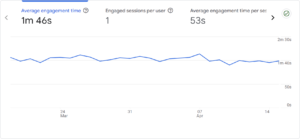
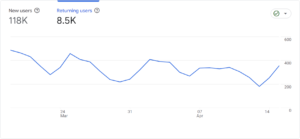
If your content is engaging enough to pull visitors back, it accentuates the value and relevancy of your content.
Bottom-of-Funnel Content Tracking Tools You Can Use
Your starting point, as with many other aspects of digital marketing, is Google Analytics. It’s the go-to tool that can provide insights into a wide range of metrics relevant to your BoFu content, from user engagement and conversions to purchase journeys and promotions.
Consider using heat map tools, such as Hotjar or Crazy Egg, to visualize how users interact with your landing pages and find potential areas for optimization.

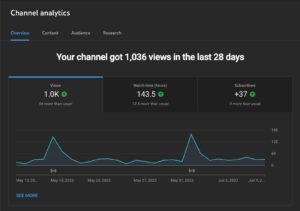
Your website isn’t the only thing that can give you valuable data.
Your video content, for instance, could provide precious audience retention data, indicating where viewers drop off, potentially highlighting a gap in information or a break in the story.
YouTube already gives you a bunch of info, and you can supercharge it with tools such as VidIQ or TubeBuddy.
Bottom-of-Funnel Content: Best Practices
You now know what BoFu content is, how it speaks to your target audience, and how to measure its success. But before you get started, here are some quick tips:
- There’s no such thing as bottom-funnel content existing in isolation. It’s critical to ensure that your BoFu content is in sync with your ToFu and MoFu content.
A seamless, aligned narrative journey across every funnel stage is key to getting your leads over the line. - Don’t sell; help your customers buy. While your end goal is to sell your product or service, your prospects are looking for help to make a purchase.
Instead of demonstrating why your product is superior, show them how they can utilize it to address their pain points. - Use SEO to improve the visibility of your content. This is something that goes under the radar many times. But, just because your visitor reached the BoFu stage doesn’t mean your SEO responsibility is over.
- Optimize your BoFu content for search engines! Only this way you can be sure that undecided prospects will find your content when they turn to search engines for last-minute research.
- Don’t be scared of A/B testing. Does one type of BoFu content work better for a specific segment? Maybe a video testimonial pulls more weight than a written one in certain industries. You’ll never know if you don’t test!
- Personalization is paramount. Sure, you may not be able to create individual landing pages for every potential customer, but this doesn’t mean you can’t adjust your message.
- Your demographic insights tell you a lot about your target audience. Use that information to your advantage.
For instance, your TikTok audience may prefer short case studies over how-tos, while the latter may resonate better with your newsletter subscribers. - Keep experimenting. There isn’t one formula for the best BoFu content, and sometimes, following your competitors’ exact steps can bring little to no results.
- Create a strategy, implement it, check the results, and act upon them (PDCA, remember?). Only this way you can truly understand what works best for your audience and optimize your conversion rate.
- And lastly, avoid being repetitive. There’s nothing more uninviting than another ‘perfected’ copy or that landing page full of stock phrases.
Keep things exciting and fresh by creating bottom-of-funnel content that is truly yours. It doesn’t have to be ‘perfect,’ but rather authentic and effective at emphasizing the values you represent.
Aftersale: Keeping Bottom-Funnel Content Momentum
Putting aside the debate of whether aftersale is a stage of the funnel or sits outside it, the fact remains that your job in content marketing doesn’t end with sales.
Let us put it this way: you shouldn’t disappear from your customer’s life (or search engine results) after they’ve made a purchase.
Instead, you should keep them engaged.
Your paying customers are more likely to become loyal to your brand if you maintain communication. A tried and tested way to do that is through email marketing.
This is true even if your business model does not involve recurring revenue. Keeping in touch, offering help and providing the right content is what makes your brand big. And with that, it keeps this precious organic traffic flowing.
Final Thoughts
There you have it. Our journey through the sales funnel ends here.
Hopefully, by now, you understand the role and importance of content at each stage of the marketing funnel.
Starting at the top of the funnel with educational pieces designed to raise awareness, through creating engaging MoFu content that nurtures and builds relationships with leads, and finally delivering highly-targeted BoFu content that drives conversions.
Each stage plays its unique part in guiding the prospect toward making a purchase. The ToFu, MoFu, BoFu framework provides you with a structured approach to building an effective sales funnel.






![Google March 2024 Core Update: What we know so far? [Don’t Panic]](https://non.agency/wp-content/uploads/2024/03/google-march-2024-core-update--300x225.png)
